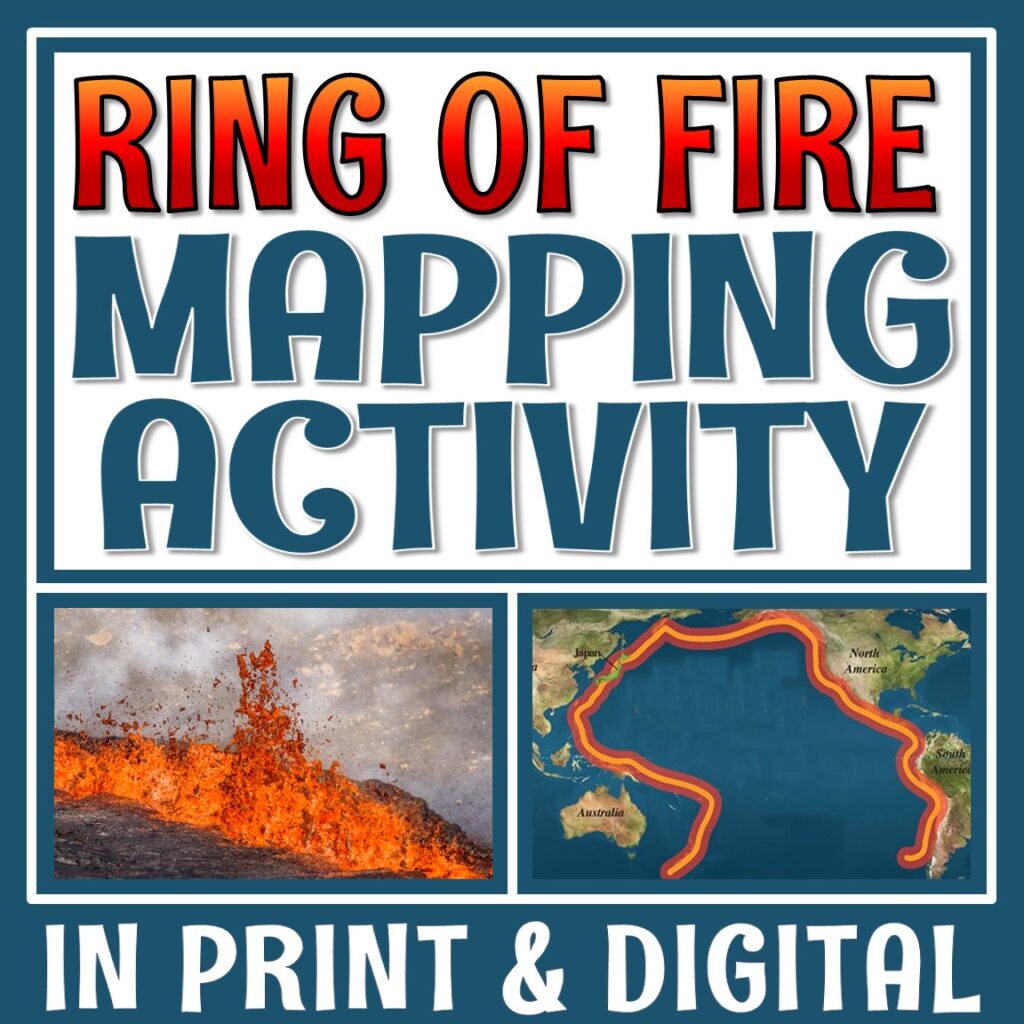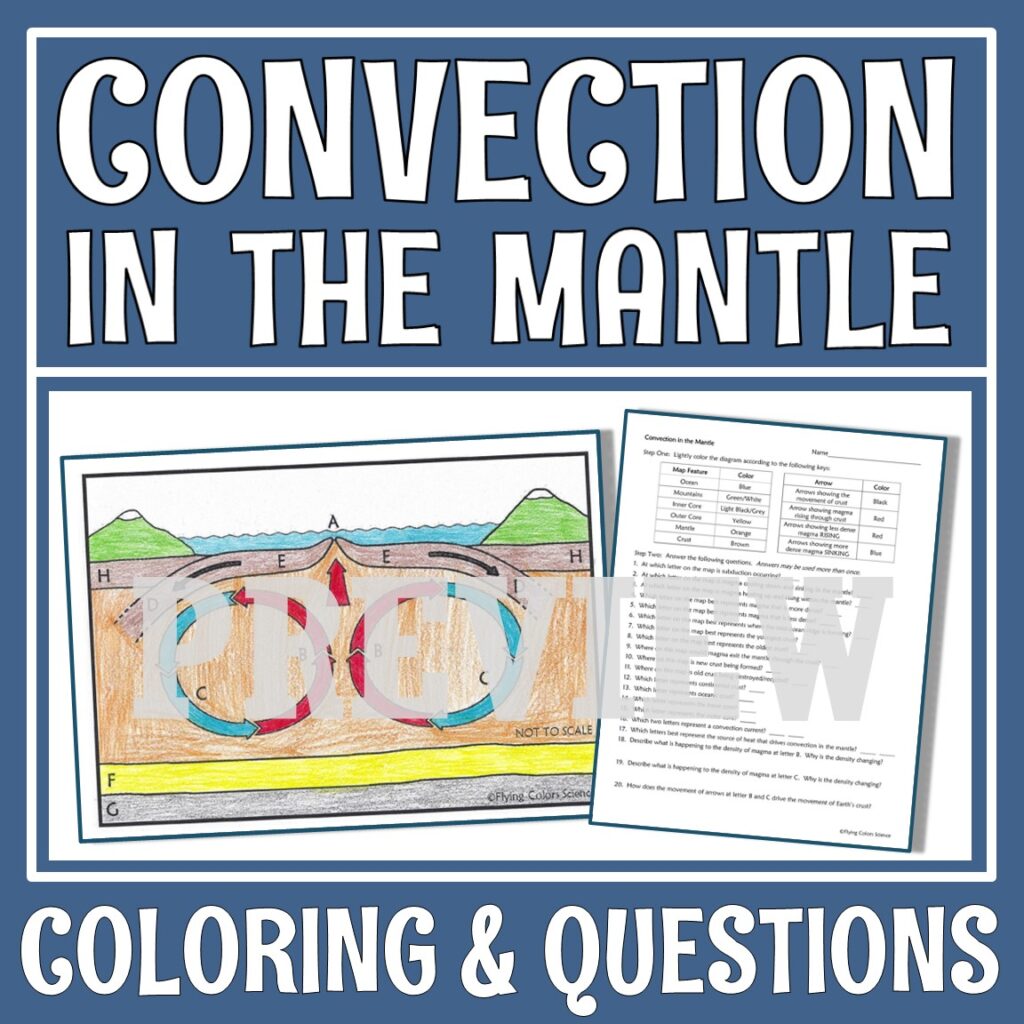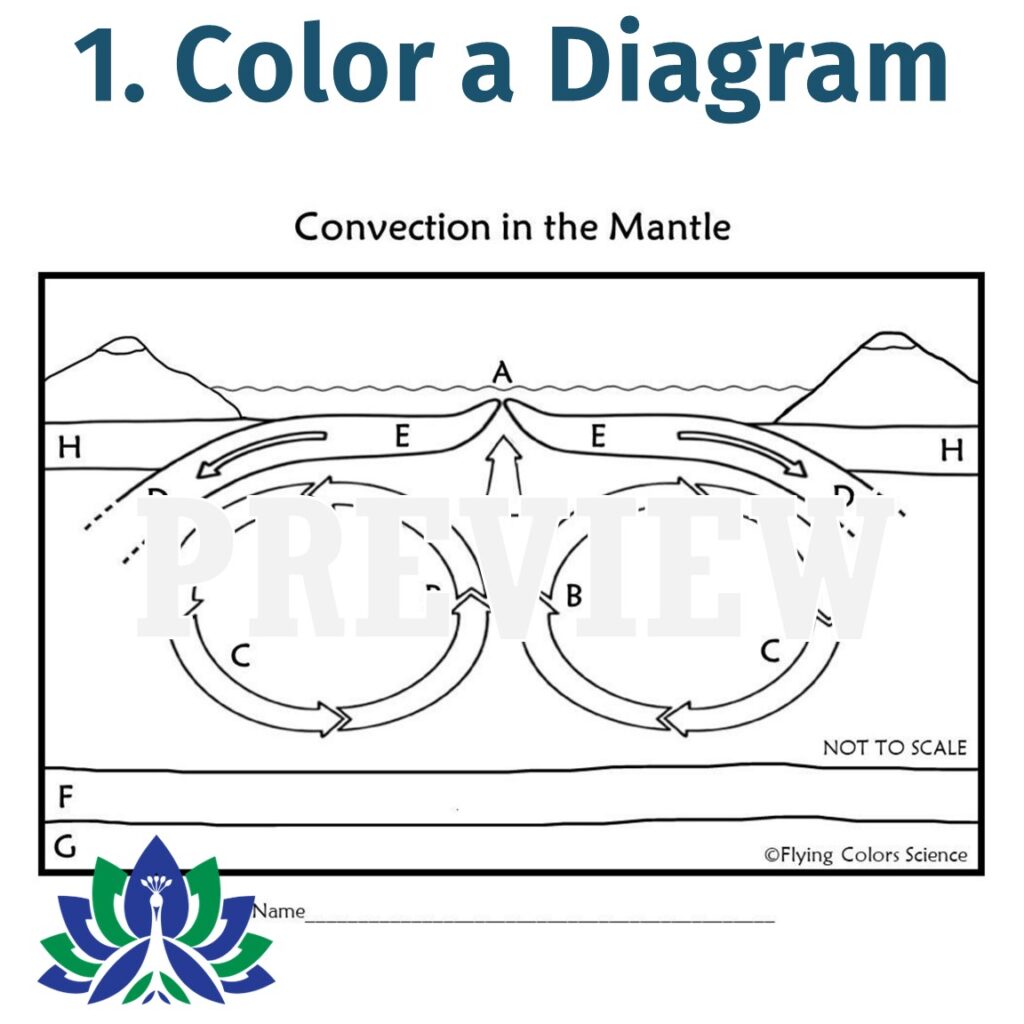
5 Cool Activities to Teach Plate Tectonics
Looking for activities to teach plate tectonics that are both rigorous AND engaging? Growing tired of the same ol’boring activities you’ve used in the past? I’ve got you!
While I start my plate tectonics unit with some standard informational texts (in fact, you can get the first reading in the series FREE HERE!), that’s where the “standard” approach to teaching plate tectonics ends with me.
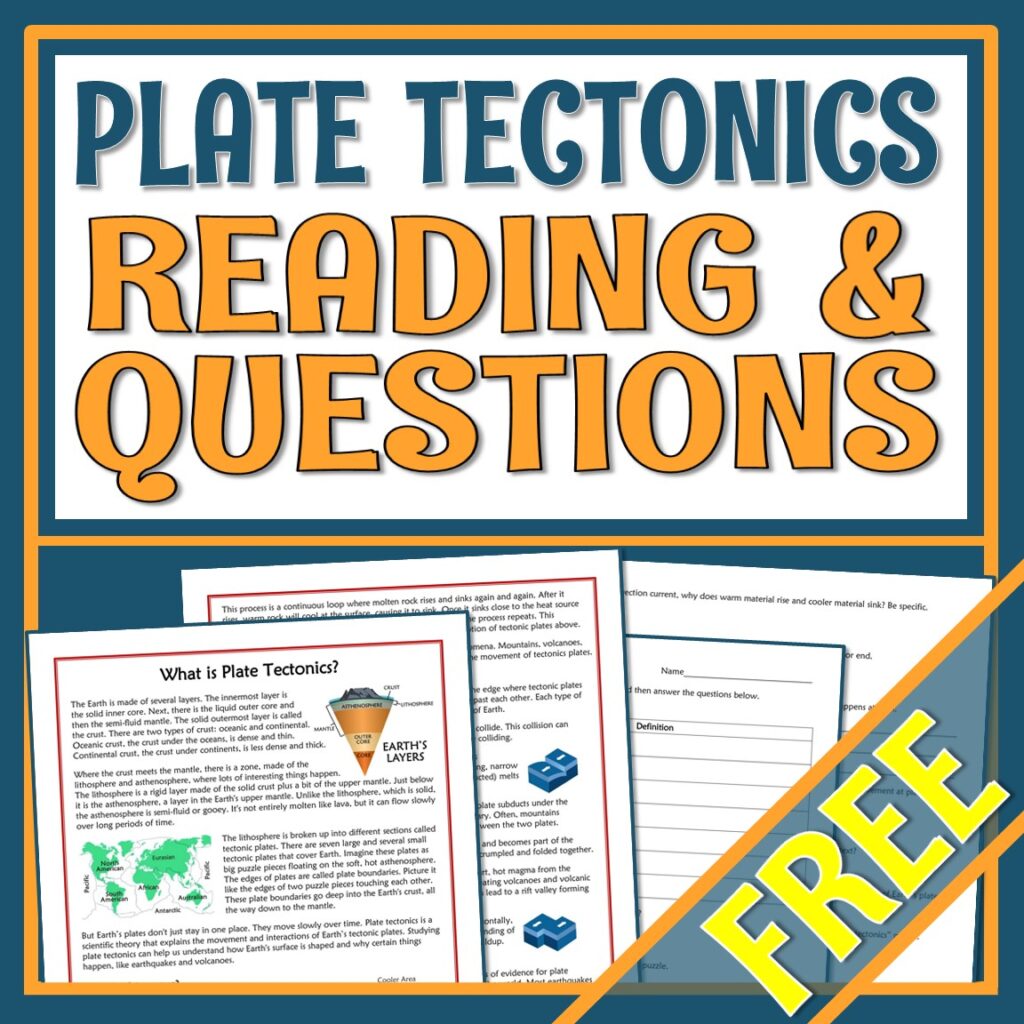
with Worksheet
There’s plenty of ways to add engagement to a plate tectonics unit. Here are my top 5!
Get Kids Graphing
One of my favorite activities to teach plate tectonics is to have students graph and map seafloor spreading. Now, I don’t know about your students, but if they are anything like mine, their basic science skills are lacking. Graphing, reading maps, analyzing data – they struggle with these things. So, I try my best to incorporate these skills into as many lessons as possible.
A great opportunity to practice graphing in a plate tectonics unit is when discussing seafloor spreading. In my Evidence of Seafloor Spreading activity, students are given the age of rocks at various places in the Atlantic Ocean. They color code a map to visualize the age of rock on the ocean floor getting older the farther away it is from the mid-ocean ridge.
Map the Ring of Fire
“But all the dots are all in a line!” Talk about a lightbulb moment! Instead of telling kids about the Ring of Fire, let them figure it out for themselves! This Ring of Fire Activity is one of the most valuable plate tectonics activities I do.
In this plate tectonics activity, give students the location of ACTUAL (as in… really happened) volcanoes and earthquakes around the world. As they plot more and more points, they often get a little confused as to why all the dots they are plotting are all in one line – not spread across the map.
As kids realize that these spots are all around the Pacific plate boundary, the “ohhhhhhhhhhhhhs” start to be heard around the room. It’s great!
A bonus for this activity – it’s differentiated. It comes with two sets of data, one smaller set, and one bigger set. You can discretely give some kids less data, but they are able to plot the Ring of Fire just like their classmates.
More than a Coloring Page
I’ll say it. I’m not a fan of science coloring pages unless they have a point. Coloring just to color is good for a lot of things, but not for content acquisition or practice.
So when I have kids color in science class, it has to have a bigger purpose. This diagram of plate tectonics and convection in the mantle is one of those assignments that helps cement how plate tectonics really works in my students’ heads.
First, they color a diagram of convection in the mantle. They don’t color it any-which-way, but based on specific instructions in the document. (This is good instruction-following practice, too.) After they have colored the diagram, kids answer questions that help them to analyze it – questions like…
- Which area on the map best represents magma that is more dense?
- Where on this map is old crust being destroyed/recycled?
- Which letter on the map best represents where the mid-ocean ridge is forming?
These analysis questions truly “elevate” the coloring, as the cool people say.
Continental Drift Flip Book
Have students make a flip book that shows plate movement!
OK, so this is not the most rigorous plate tectonics activity, but it’s one of my favorites, anyway. It’s quick, fun and helps students visualize continents’ slow movement over millions of years.
How it works: Kids are provided with 10 boxes to cut and color. Then, staple the boxes to make a simple flip book. You can see the flip book in action in this Instagram post.
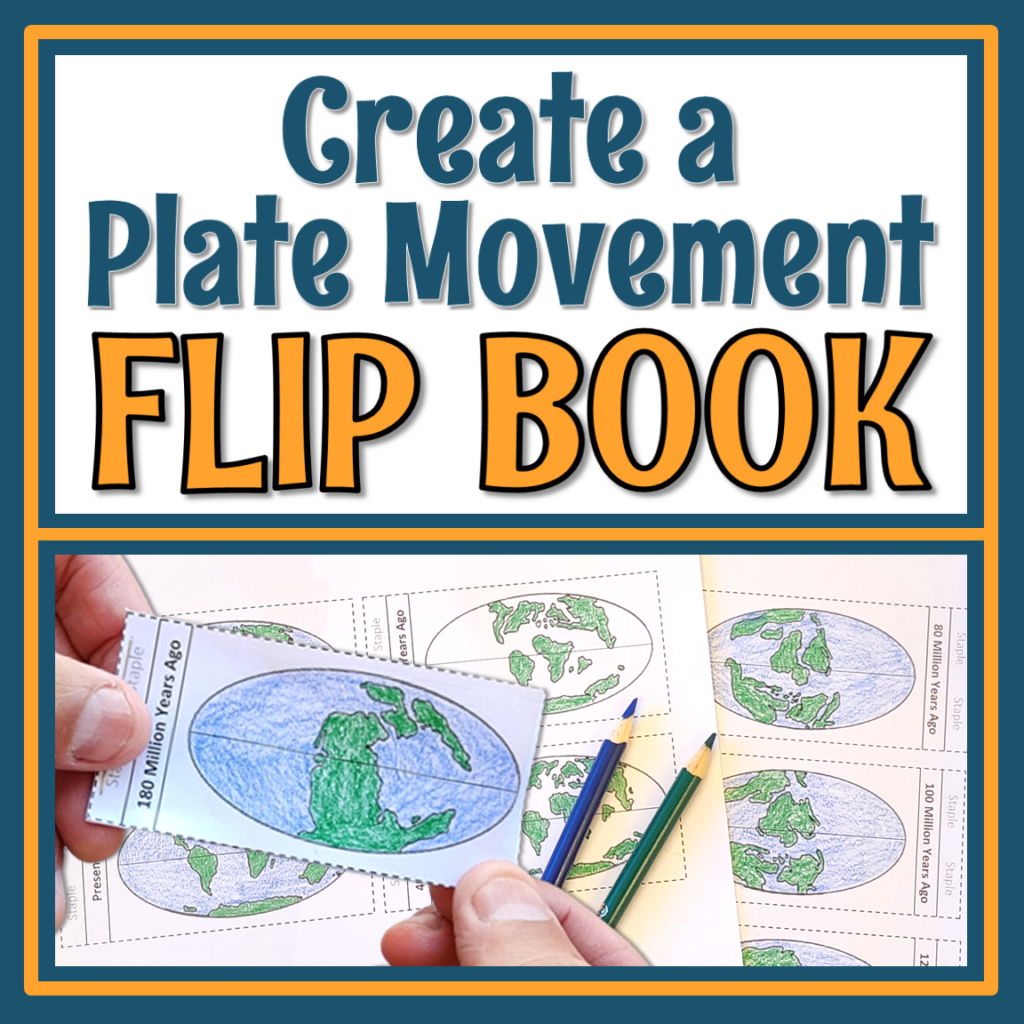
Plate Tectonics Project
The best way to round out a plate tectonics unit is to have students do a choice project. The students get to choose how they want to show what they’ve learned about plate tectonics.
Tell students that the following concepts must be included in their project, including the following categories:
🗺️ Plate boundary types
🪨 Crust types
⛰️ Landforms
🌎 Other important items
Each item that must be covered is assigned a certain number of points. How they choose to demonstrate their knowledge is up to them, but the guidelines are clear.
Truth be told, the first time I assigned this activity, I was really nervous. How would my heterogenous mix of students handle so much freedom? What would they come up with? How many parent emails would I be facing?
But as it turns out, this project goes amazingly well. Students come up with a huge variety of project types. My worry about “too much freedom” actually led to incredibly diverse projects where each student got to shine in their own way.
If you’d like to see some of my students’ projects, you can watch this Instagram video or a different video on the TPT product page for this resource.

I hope you found some activities you can take back to your own classroom to teach plate tectonics. Don’t forget to grab the FREE PLATE TECTONICS READING before you go!
Let’s Connect!
If you like these ideas, please follow me on Instagram where I offer science teacher tricks and tips! And you can follow me on Teachers Pay Teachers, too!
Share it:
- Read more about: Earth and Space





